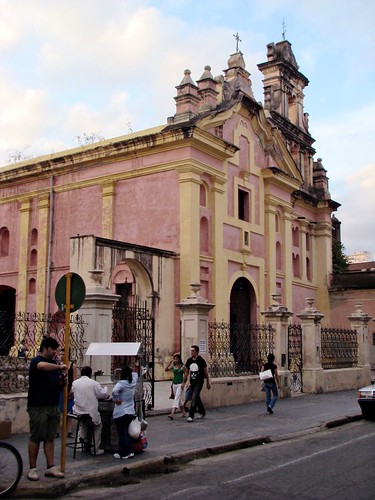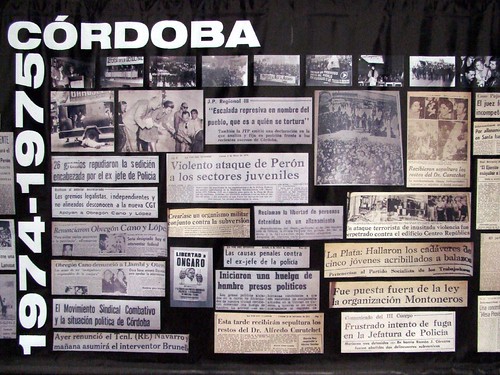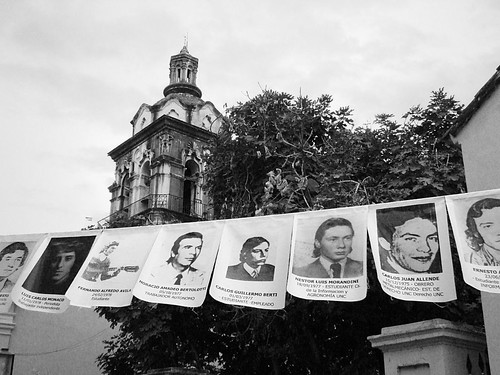(As of this time, I'm neither ready nor willing to write a definitive statement about the situation in the countryside. So I'll begin with the story of my vacations.)
We arrived in Córdoba City after a six-hour trip from Rosario. It was a very good thing that we'd booked a room in a hostel located only two blocks from the bus station, although it was partly uphill (Córdoba is like that). We settled there and went to Parque Sarmiento, a large stretch of urban park zone nearby.
It wasn't a pretty sight. Compared to the exuberant foliage one can find in Rosario's parks, this one was rather sparse. There were many stretches of dirt, rather than grass. We took a winding stone path and found it stank of urine and was blocked by garbage. There was no signage for the visitors. In general it seemed like a picture of lack of care. We finally came to a less depressing view, an artificial lake with nice white bridges and balconies. On the shore were a group of bullyish, hungry ducks, and some biguás (Neotropic Cormorants) on the stones in the middle of the lake.
The birds were the only highlights of this visit to the park, which, I admit, is much larger than that and must have better views... somewhere else.
That was the morning. Later, and after a nap, we walked down (actually it was up) to the historical core of the city. Córdoba was founded in the 16th century and has some stunning colonial buildings left, mostly religious, mostly built by the Society of Jesus. The Jesuits were everywhere at the time (it isn't difficult to see why they were ultimately expelled by the Spanish Crown — they had too much power).
They built for eternity back then — one-meter-thick walls, no mortar.
It was Maundy Thursday, so special masses were being held in some of the churches. We couldn't enter the Cathedral, but we stole into the ceremony at the pink-and-yellow church of St. Therese [pictured above] and stood there, a drop of godlessness in a pool of... well, mostly incense. Now seriously — it was truly mesmerizing, and I mean it in more than the anthropologically detached way, to watch the ceremony. Incense, candles, slow chanting, the subdued atmosphere inside the temple was effective; I could feel it, so I imagine for someone that considers this betrayal-death-resurrection stuff more than a myth it must have been powerful, overwhelming.
At the other side of the same block, along a narrow street/passage, people were beginning to prepare for the commemoration of a much less mythic, much more painful story: the 32nd anniversary of the last coup d'état, which brought to power the bloodiest dictatorship in our history, the perfidly self-styled National Reorganization Process. There was a large board with copies of newspaper clippings leading up to the coup — news bits that for the most part must have been considered mere incidents back then, rather than the ominous preparation for a dark era.
There were also tens of pictures hanging among the old-fashioned lamps in the passage, showing the faces and personal data of local desaparecidos. Against the background of the imposing towers of the Cathedral, I couldn't help feeling the contradiction. The Catholic Church for the most part either stayed silent, and often supported and even encouraged, the military's criminal plans; the archbishop of Córdoba, Raúl Primatesta, played an instrumental role in suppressing ecclesiastical criticism of the government. To this day, human rights organizations don't forget this, as attested by several graffiti.
And that was our first day in Córdoba.


















Beautiful, and also haunting, pictures. I see the strike has ended - I hope a happy accord can be made between all sides but while I feel there was a terrible lack of communication on all sides from a distance I have to side with the "K" crowd and Cristina and I give her kudos with a capital K for resolving this. Roberto desde Miami
ReplyDelete